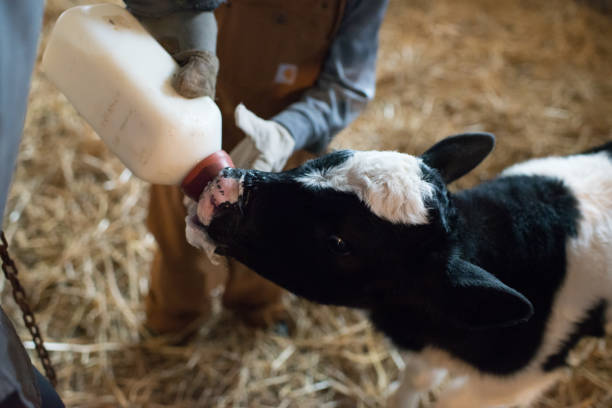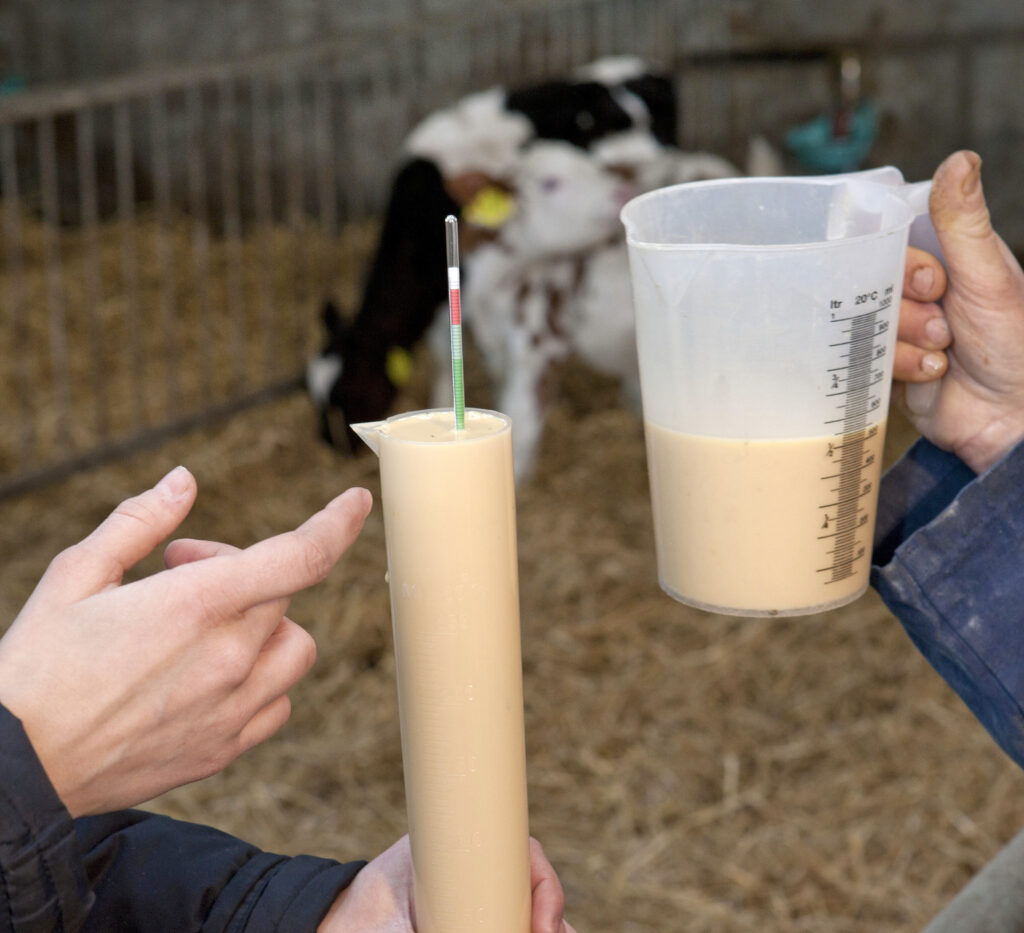Do you need the low-down on colostrum? We are going to give you the 411 on colostrum and why it is essential to the future of your dairy herd. Colostrum management is one of the essential building blocks of a thriving dairy farm. How you care and treat your colostrum determines if the new herd will continue to be productive. There are a staggering 11-31% of all calves born in North America that do NOT receive adequate colostrum! As you all are well aware of, a cow’s placenta prevents immunoglobulins from being transferred to the baby calf in utero, meaning that calves are born without immunity from disease and that is why colostrum is critical. Colostrum contains the necessary IgG and white blood cells that a newborn calf needs to develop their immune system and the energy and proteins needed to grow and thrive.

What is Colostrum and Why is it Important?
Colostrum is the first milk that a cow produces after a dry period/birth. Colostrum begins to dilute quickly after birth. Colostrum contains high levels of fat and protein verses milk. It also contains minerals and IgGs that are produced by B cells. The colostrum aids in the gut development of a new calf. A calf needs at least 150g, ideally 200-300g of IgG for immune protection for the best chance of livelihood.
It is important that the this first feeding of colostrum is given to the calf quickly, as their small intestine is ready to absorb all the IgGs at birth. The gut remains open for a short period of time. Absorption ability begins to decrease significantly after 12 hours of life and closes at 24 hours of life. This is why we recommend that the first feeding occurs in that first hour of life. When the colostrum enters the abomasum of the newborn calf, an enzyme called renin will clot the colostrum into curds and whey, thus creating a “cheese” that will continue to feed the calf throughout the day until the next feeding.

Factors affecting IgG Concentrations in Colostrum:
There are several factors that can affect the quality (IgG concentration) of the colostrum. These factors include:
- Bacteria concentrations
- First milking volumes-producing more than 2 gallons (15 lbs)
- Immune status of the dam-her disease and vaccination history
- Length of dry period-if too short of a period, you will have lower IgG concentrations
- Age of the dam-there is a small difference between mature and new dams
- Breed of cow
- Leaking prior to calving
- Season of the year-related to feed quality and temperature extremes. For example summer births then to have lower IgG levels due to exposure to heat stress
- Dry cow nutrition
Determining Colostrum Quality:
We have collected our colostrum, but now what? We need to determine the quality of that colostrum so we can feed the appropriate levels for maximum IgG absorption. For testing, you will need to use a colostometer or a refractometer to measure the quality. Both instruments are invaluable tools to have in your maternity area. Quality is based on the Brix scale, which measures the IgG concentration in g/L.
- Best Quality Colostrum readings are 22% and above (IgG greater than or equal to 50g/L)
- Good Quality Colostrum readings are between 18-22%
- Poor Quality Colostrum readings are lower than 18% (IgG less than 50g/L)
You may need to use supplementation with colostrum in that 18-22% range for maximum IgG absorption. You should not use any colostrum lower than 18% for the first 2 feedings of colostrum.

Colostrum Care and Storage Guidelines:
Once you have collected and tested your colostrum, now you have to determine if you are going to feed it immediately, pasteurize it, store it. If you are going to feed it immediately, make sure the feeding equipment is cleaned and sanitized between each feeding, you don’t want to introduce any bacteria into it at this point. Also it is extremely important to note that the bacteria doubles every 20 minutes when the colostrum is out at room temperature, so your timing is critical.
We recommend pasteurizing the colostrum in individual meal size portions to help kill some of the bacteria found. Remember that pasteurization is NOT sterilization. Using one of our Calf Hero™ pasteurizers, gently and effectively heats the colostrum to 140°F for 1 hour. Then it brings the temperature down slowly to either a feeding temperature of 104°F or a safe temperature for long term storage 68°F in a freezer.
When storing your colostrum, you can store it short term in the refrigerator for up to 1 day. If you are not planning on feeding the colostrum that day, then you need to store it in the freezer. Colostrum can be frozen for 6 months to 1 year.
Thawing frozen colostrum, needs to take place in a water bath and not the microwave. When you use a microwave to thaw colostrum, you denature the antibodies found in it, thus killing all the necessary IgG needed for a successful passive transfer. Freezing it flat, in meal size portions allow for rapid thawing. Thawing in the Calf Hero™ thaw bath, the colostrum is gently rocked back and forth to allow for even warming of the colostrum.
In summary, colostrum management needs to be at the forefront of your maternity protocols as it is the one of the most important factors in a healthy calf. Make sure you pay special attention to how you care for, quality test, and store your colostrum.
